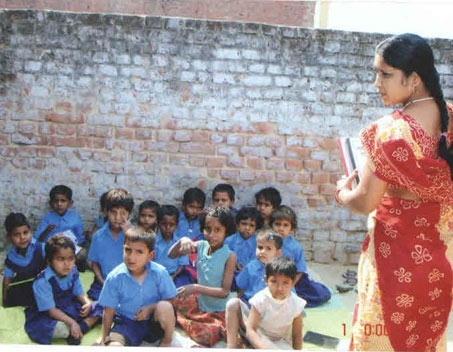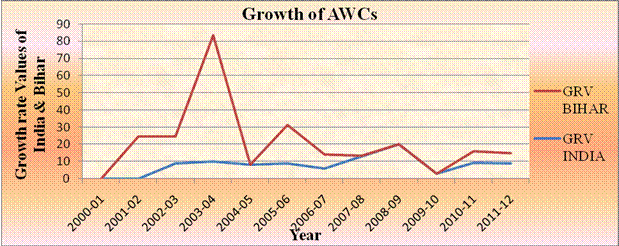|
09/06/2013
ICDS: Helping Children fight Malnutrition in Bihar?
|
The number of beneficiaries has also risen from 2398572 in 2000-01 to 9076023 in the year 2011-12 and is expected to increase further enveloping more people in the neglected areas, because of getting the approval of opening mini AWCs as well. In 2003-04 there was a significant increase in the number of beneficiaries which made a figure of 5998212, due to universalization of the scheme. More number of beneficiaries paints a picture of scheme being run successfully in the implemented areas, showing a win-win situation for Government as well as for the people getting the benefits. There are huge funds that come from the Central and the State Government for the programme, and recently even the Bill & Malinda Gates Foundation have signed an agreement with the state for improving the nutrition status of the poor. The scheme also works in partnership with UNICEF, the world's leading and most respected children's organization to ensure the health, education, equality and protection of all children in and advanced manner. This partnership makes private sector play a huge role in the delivery of services in the best possible manner.
Source: Directorate, ICDS, GOB; Economic Survey of Bihar 2010-11 It can be inferred from the table that much attention is being paid towards the scheme in each year’s budget. As compared to the funds released by the Government as percentage of budget, the expenditure as percentage of funds released for the scheme has always exceeded except for the year 2007-08, where Government seemed to have cover all the requirements within the given amount. In the year 2010-11, the expenditure as a percentage of funds released was only few numbers more than 50%. There are other two schemes also, which have been started by the Government recently running parallel with ICDS, they are SABLA and IGMSY. Former is to focus on the nutrition status of adolescent girls aged 11-18 and latter is for pregnant and lactating mothers aiming at their weight loss during child birth and child care along with safe delivery services. The Sectors of Education and Road Construction got the highest priority in the present Budget (2013-14). The number of beneficiaries is on the rise, there are many upcoming AWCs too, and a substantial amount is being diverted towards the scheme……………. But, why the malnutrition level is not going down the mark line? Why children are still starving for atleast one meal a day? Why is there a dip in the gender ratio? Why the infant mortality rate and maternal mortality rates are still significant in the state? Now these many questions compels one think, that is it the Government which is not working for the people or is it the staff working in the scheme, who are not honest in providing true services or is it the fellow humans, who are dragging the scheme towards a failure? Are the benefits truly received by the ones in dire need of the same?This is because mere counting of numbers and introduction of new projects is just going to lead one towards an illusion and nothing else? And this is the reason why fighting malnutrition is a big hurdle in front of the Government and people facing it. It is well said by Gabriel Mistral that: "We are guilty of many errors and many faults, but our worst crime is abandoning the children, neglecting the foundation of life. Many of the things we need can wait. The child cannot. Right now is the time his bones are being formed, his blood is being made and his senses are being developed. To him we cannot answer "Tomorrow". His name is "Today".-Gabriela Mistral, 1948 So, the importance of the scheme must be realized by the Government and Higher Officials working for it. A small step towards restructuring, and reforming the existing one with intensive awareness programmes would suffice reach it the ladder of success and ones perfectly implemented, it would carry on like the traditions and beliefs being carried from one generation to the next without any extra or special efforts….. Key Words: ICDS – Integrated Child Development Services/Scheme, AWCs – Anganwadi Centres
comments powered by Disqus |

 I
I

